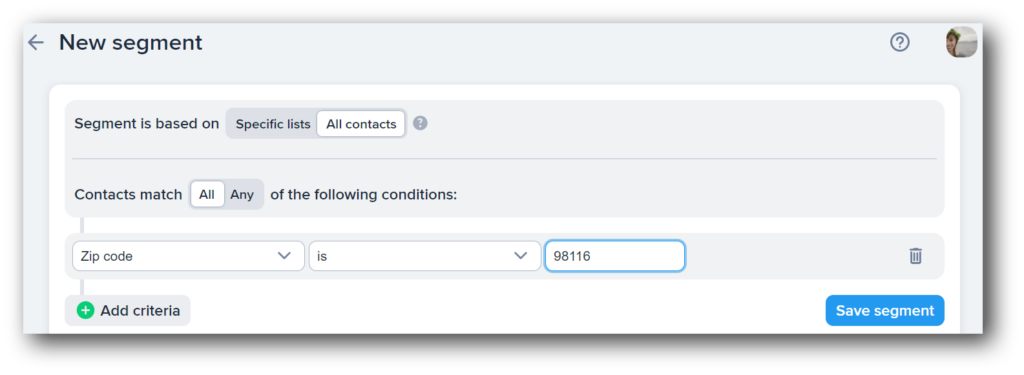Understanding Retail Customer Segmentation: The Top 5 Types of Retail Customers
Want to send more targeted messages that result in more sales? Read on for a quick guide to the most common types of retail customers and how to interact with them.

Want to send more targeted messages that result in more sales? Read on for a quick guide to the most common types of retail customers and how to interact with them.

Pop quiz: Who are your customers?
I’ll be honest — back before I started writing about retail marketing, I would have answered that question with, “A group of people who buy from you.”
And I would have been wrong. The truth is that your customers are diverse, as are their needs, wants, habits, and demographics. Knowing all those unique factors and catering to them pays, big time.
The data says that 80% of consumers are more likely to buy from a brand that offers a personalized or tailored experience. To provide that experience, you’re going to need to get familiar with the different customer segments your business serves.
TABLE OF CONTENTS
Retail customer segmentation is the practice of grouping customers based on shared preferences, habits, or other traits.
Basically, it’s about finding the things your customers have in common and sorting customers into groups based on those factors. This way, you can serve them highly personalized content and ads, which can help you get better results for less money.
I’ll walk you through what those segments might be and how to communicate with them to keep them coming back to your brand.
While there are countless behaviors and demographics you can use to segment your customers, here are the top five types of retail customers you’re likely to come across.
These are (you guessed it) newcomers to your brand who have just made their first purchase.
New buyers like your business or products, but they won’t continue to buy from you unless you give them a reason to stay.
To do this, you have to show them the value of your brand and your products.
Here are the two easy ways to do this:
You want to show these newcomers that you’re happy to have their business and you have other things they’re sure to love on offer.
As for your welcome message, here’s how you might consider greeting them.
As the name suggests, these are customers who have bought from you multiple times (or even better, consistently).
Repeat customers might not need as much convincing as first-time buyers, but you still need to show them that you’re grateful and that you recognize them as people, not sales.
Pay close attention to these customers, including where they came from (social media, Google, referral), what they tend to buy, and any other details they’ve given you.
You can easily gather this kind of information with a link to a survey, a text survey, or even good old data collection.
Knowing these particulars will help you:
Not to mention, personalization and attention to detail are quickly becoming standard expectations among your customers. 72% percent of consumers say they expect the brands they buy from to see them as individuals and know their interests.
This is also a great segment to introduce to any loyalty or rewards programs you might have (like Harmony Tea Bar does). Sending regular perks like discounts or free items is a great way to keep already-interested customers around long-term.
Sometimes even customers who love your products will drift away, but it doesn’t have to be the end of your relationship with them.
Bring past buyers back with an incentive that’s relevant to their interests and previous purchases.
Look at what they bought from you last or added to their wishlists, and show off related products they might be interested in.
Pro tip: To avoid having to periodically check who’s dropped off the map, set up automations through your SMS provider with tools like Zapier or Shopify to automatically trigger texts to inactive or lapsed customers.
So, putting all that together, your messages might sound a little something like:
I’ve talked a lot here about using customer purchase information to personalize your messages, but sometimes those purchases can be a segment in and of themselves.
If you run, say, an outdoor supply store that sells all kinds of sporting equipment and you have certain customers who only buy canoeing gear and others who only buy rock climbing equipment, you can easily separate those customers into individual segments.
The biggest benefit to this kind of segment is that it ensures your customers hear about every new and complementary product in the category, which can lead to more sales.
Plus, this gives your communications a much more personalized touch and helps you avoid annoying your contacts with irrelevant information.
You can also address customers based on the feedback they’ve given you or, more specifically, how high or low they’ve scored your business in the past.
Texting these customer segments basically works on a sliding scale. Do they rate your brand a 10/10? Amazing. Now give them a reward or thank them for their loyalty.

On the other hand, if they gave you a 1/10, you may be better served asking them to elaborate, offering them customer service options, and giving out a reward code or gift to sweeten the interaction.
Moving forward, you’ll know how best to address all your customers, from those who want a little more attention from your brand to those who count themselves among your raving fans.
So, you now know about a few types of retail customer segments you’re likely to encounter and you’ve got an idea of how to communicate with them.
With all that in mind, what’s the next step? How do you put all that inspiration to work? Here’s the easiest way to set up segments within an SMS tool.
Note: This process may look different depending on which SMS provider you use. Here’s how it’s done in SimpleTexting.


Now, when you’re getting ready to send a campaign, you can select your segments from the Send to drop-down menu.
You don’t have a lot of time on your hands, but as a caring business owner, you want your customers to feel valued during their experiences with your brand.
Segments are your dream solution. You can send highly relevant messages to any kind of customer you can think of with just a few minutes and a couple of clicks.
Lily is a content marketing specialist at SimpleTexting. She specializes in making helpful, entertaining video content and writing blogs that help businesses take advantage of all that texting has to offer. When she’s not writing or making TikToks, you can find Lily at roller derby practice or in a yoga studio in the Seattle area.
More Posts from Lily NortonUse these car service reminder email templates to cut your admin time in half and generate more service appointments.
ReadThird-party cookies have been an instrumental data collection tools for marketers around the world. With Google Chrome's recent announcement that it will no longer support cookies from 2023, what is the alternative to third-party data?
ReadStart a text marketing campaign or have a 1-on-1 conversation today. It's risk free. Sign up for a free 14-day trial today to see SimpleTexting in action.
No credit card required